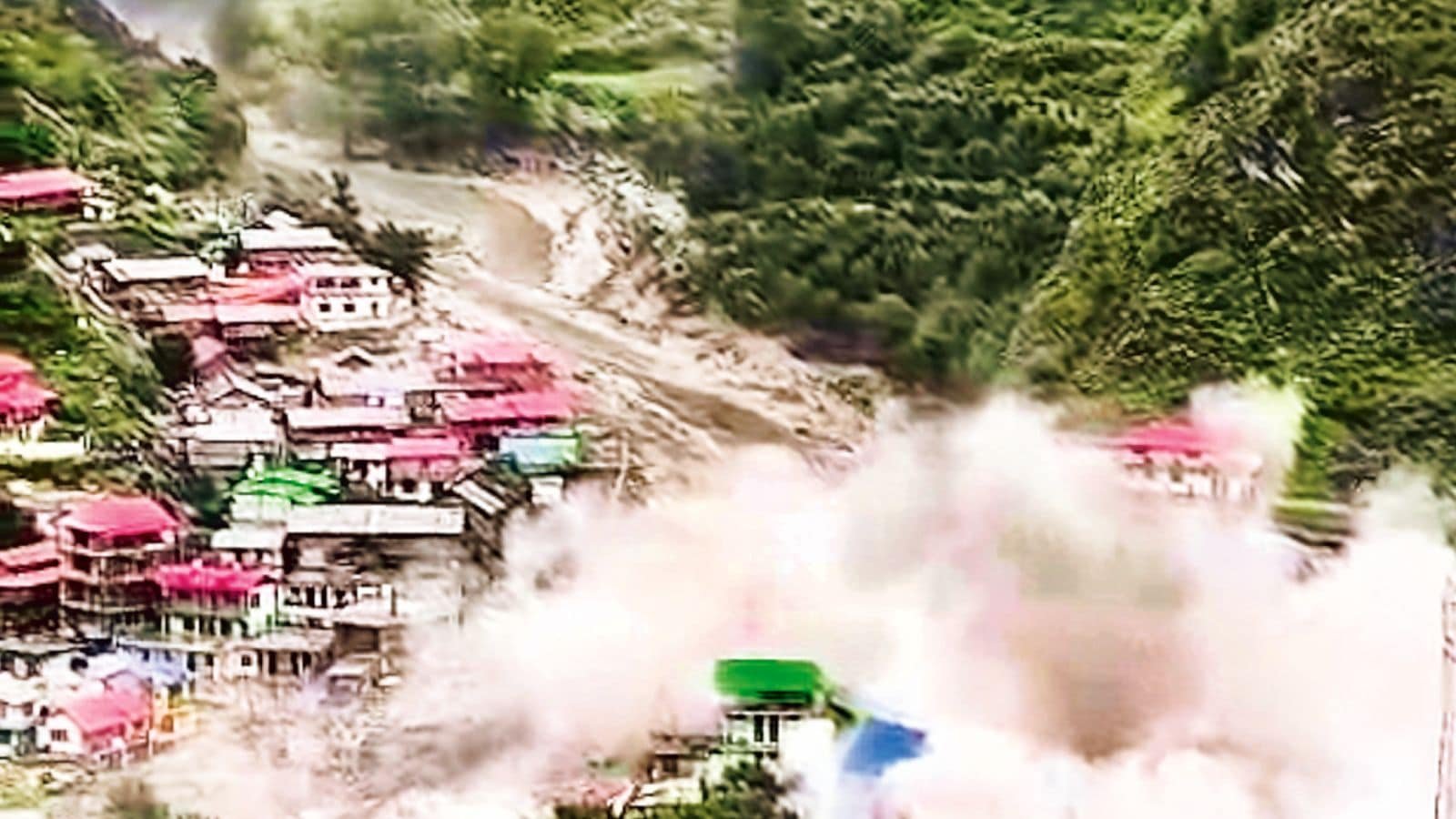The Himalaya is a civilisational archive where geology and ecology shape imagination as profoundly as they carved rivers and valleys. Across centuries, communities developed cultures attuned to the altitude and scarcity of certain resources: From trans-Himalayan caravans of salt and wool to Brahmins consuming meat and mutton. Mountain life was diverse, yet geography was not a backdrop but destiny.
Today, the very conditions that once fostered resilience — sacred ecology, terraced fields, rugged topography, seasonal migration — are being recast as vulnerability. The “abode of gods” risks becoming India’s disaster capital. The question is not simply environmental, but civilisational: How did cultures once shaped by the bounty of the mountains become endangered by ecological instability and extractive development?
For centuries, mountain life was built on adaptation. The Bhotiyas of Milam, Darma, Chaudas and Vyas Valley practised “verticality”: Moving families and flocks across altitudes to exploit every ecological niche. This rhythm was both economic and cultural. Today, however, migration is no longer cyclical but outward. The 2011 Census recorded 1,048 “ghost villages” in Kumaon and Garhwal, their terraced fields overgrown, their sowing festivals missing. Outmigration may open opportunities in the plains, but it hollows out memory. Languages fall silent, rituals vanish, deities lose worshippers, children grow up unmoored. The tragedy is not only demographic but cultural, an erasure of belonging itself.
Architecture tells a similar story. Traditional houses of wood, mud and stone — scattered across ridges but never seen on floodplains — embodied resilience. They stayed cool in the summer, warm in the winter. In Nandgaon, earthquake-resistant homes still stand as testimony. In contrast, the booming infrastructure along the Char Dham Yatra route represents an epistemic shift. Traditional wisdom is dismissed as “backward” while concrete hotels and homes rise on riverbeds in the name of modernity and religious growth. Sonprayag, flooded in 2013, and has since been swallowed up even more. The all-weather road project thus becomes a metaphor: Development under the guise of “religious growth” that erases indigenous knowledge while deepening vulnerability.
Religion too once followed ecological logic. Deities migrated with the snow: Lord Kedarnath descending to Ukhimath, Goddess Ganga to Mukhba, Baba Tungnath to Makkumath. Peaks like Nanda Devi and Chipla Kedar were revered because they sustained streams, glaciers and medicinal plants. Today, this relationship is ruptured by mass tourism. The Dham was once a final, once-in-a-lifetime pilgrimage; today it is sold as a packaged family vacation. Sacred landscapes are consumed as spectacles, stripped of their ecological sanctity.
Festivals such as Harela and Phool Dei embodied reverence for nature, crops and greenery. Folk singers like Narendra Singh Negi captured this bounty with lyrics like such as “Thando re thando, mero paharo ke haawa thandi, panni thando”. Girish Tiwari Girda’s poem “Is vyapari ko bhook bhot hai” was an indictment of exploitation, now part of the Himalayas’ cultural archive.
Water reflects this collapse most starkly. Springs (naulas and dharas), once worshipped as “water temples,” are drying up. A state with six major rivers, villages along the Kedarnath Yatra marg, Chopta, Bhootanu and Gopeshwar face acute scarcity. As historian and editor Shekhar Pathak reminds us, it is these micro-streams, not the mighty Ganga, that sustain Himalayan villages. This contradiction — rivers in abundance, drinking water in deficit — reveals the violence of development that privileges hydropower dams and mega-projects over local lifeworlds.
Agriculture, already in decline, is now facing the twin pressures of climate change and migration. Erratic rainfall and declining snowfall are undermining the growth of crops like santara and malta; buransh flowers bloom off-season; high-altitude medicinal plants like kutki are suffering. In Himini village, women farmers report losses as hotter summers and shorter winters lead to decline of snowfall and devastate livelihoods.
The collapse is echoed in Joshimath. Its sinking ground is not merely a developmental failure but the unravelling of a town that has for centuries been a civilisational node — the gateway to Badrinath, the seat of Adi Shankaracharya’s Jyotirmath, and a hub for traders moving between Tibet and the plains. To see its foundations crack is to watch spiritual lineages, pilgrimage routes and collective memory fracture together.
As Edmund Burke warned, “We must change in order to conserve.” To protect the Himalayas is not to romanticise their past, but to politicise their survival: To recover the wisdom embedded in cultural practices, to hold technology accountable to local realities, and to confront the state’s complicity in turning the Devbhoomi into a disaster zone.
When agriculture falters, towns sink and flood; it is not only livelihoods that are at risk but the very grammar of Himalayan culture. Justice in the mountains must begin by acknowledging this truth: Fragility is not failure, but the condition of life. The task is not to impose permanence, but to craft resilience with the mountains and their populace — not against them. Whether or not power chooses to listen will decide their future — and ours.
The writer is a research scholar, Centre for Political Studies, JNU




